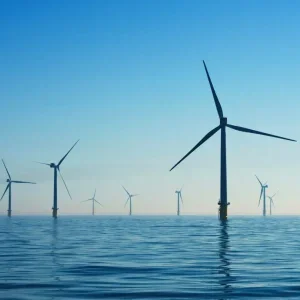The concept offers a timely solution to the industry’s most significant public policy and environmental challenges by turning used nuclear fuel into an asset.
“The nation faces a choice today: We can continue down the same path we have been on for the last 30 years, or we can lead a transformation to a new, safer and more secure approach to nuclear energy,” said Lisa Price, GE-Hitachi senior vice president for the Nuclear Fuel Cycle and chief executive officer of Global Nuclear Fuel LLC. “We need an approach that brings the benefits of nuclear energy to the world while reducing concerns about nuclear waste.”
GE-Hitachi is offering the ARC, which would put US technology to work to improve economic prosperity through job creation, enhance national security, help curb greenhouse gas emissions and provide a unique opportunity to regain the historical US leadership position in nuclear science and technology.
The ARC, comprised of a PRISM sodium-cooled reactor, combined with an electrometallurgical or dry nuclear fuel recycling facility, is being evaluated by U.S. Department of Energy and Congress as the government considers a new long-term strategy for used nuclear fuel.
Currently, used fuel is safely stored in special pools or in dry casks installed at nuclear power plant sites, a practice adopted by US government. About 95% of the material in used nuclear fuel from light water reactors is considered untapped energy that could be used to generate electricity in different kinds of next-generation nuclear reactors, such as GE-Hitachi’s Generation IV PRISM design.
GE-Hitachi’s proposed ARC system would permit much of this remaining used fuel to be recycled in the PRISM reactor to generate additional electricity for consumers. As a result, utilities also could reduce the amount of used fuel that needs to be stored on-site.
GE-Hitachi’s technology offers important non-proliferation advantages because it employs a different method of recycling used fuel compared to other proposed technologies or existing reprocessing systems, Price said.
The ARC model would support a sustained expansion of nuclear energy, helping address President Obama’s climate-change goals because electricity generation from nuclear energy does not produce greenhouse gases. Expanding nuclear energy capacity also would create thousands of well-paying, high-quality US jobs, Price said.
“Our efforts have led us to conclude that the recycling approach is the best science-based solution,” Price said, noting nuclear power supplies around 20% of the country’s electricity, and many other countries are pursuing nuclear power to meet their growing energy needs.
“The United States needs to strengthen its research and development to participate in and lead in this growth,” Price added. “GEH supports the Committee’s evaluation of recycling approaches to closing the nuclear fuel cycle as foundational to realizing the benefits of increased nuclear power production to meet our own demand for electricity.”






